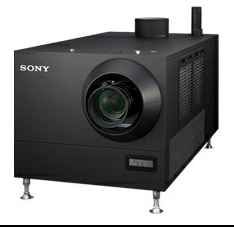Digital Cinema

Digital Cinema is now fully established. It can be broken into two parts: Production (including post production) and Distribution/Exhibition.
Production
Digital Camera capture is now established in the mainstream, but some movies and many commercials are still shot on 35mm film. Pioneers such as George Lucas were the first to shoot major features using Digital Cameras. Digital capture has moved on substantially due to the demands of Stereoscopic production. Now that creators have learnt to employ digital methods for 3D, they are adopting them for 2D as well. Digital technology is fully established in the post-production area.
Television has had many advanced tools at its disposal for many years, these tools were until recently not good enough for use on major features. The advent of new Digital Intermediate tools, running on multiprocessor-based Render Farms, has changed the situation. TV commercials used very sophisticated secondary colour correction systems with the ability to isolate and change individual colours in a scene. Film traditionally used a simple three light process where a skilled operator could match the overall image to the director wishes but could not manipulate colours within the scene.
Distribution
As mentioned above the Digital files can be written back to Film for traditional Distribution. For Digital distribution a Digital Source Master is prepared, this is then encrypted and packaged for delivery by satellite, hard disk or internet. The Digital Cinema Initiative, a coalition of seven, now six studios has published a very thorough requirements specification for Digital Cinema Distribution - www.dcimovies.com. This Requirements Specification was then processed through SMPTE. The SMPTE Standards were then processed by the ISO to make them into International Standards.
Special effects have been achieved for some time by scanning the camera negatives at high resolution 2048 x 1556 pixels then storing the images as a file. It is now common for Direct Digital Capture to be on the set. The Computer graphics process then takes the file and integrates it into the CGI shot, or in fact the CGI may be completely synthetic. The result was recorded back to Film and the negative produced cut into the movie as normal. The advent of Digital Intermediate brings the opportunity to edit and secondary colour grade the whole movie whilst it is in the Digital Domain. The finished file can then be either prepared for Digital Cinema Distribution or written back to negative stock to facilitate film distribution. A major benefit was the ability to write many negatives of equal quality so improving the quality of the Film seen in the Cinema. As Digital Cinema roll-out is now approaching 90%, this film distribution process has largely been abandoned by the mainstream industry.
